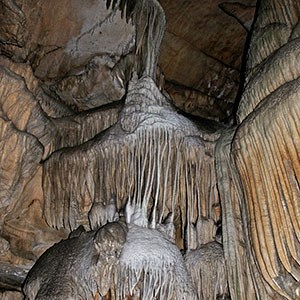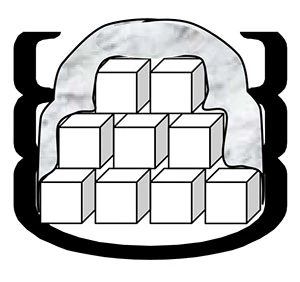
NPS photo by Dale Pate.
Grade Level: 7-12
Source: National Park Service
We typically think of caves forming when rocks are dissolved and the particles are washed away, leaving hollow spaces behind. This process may occur when precipitation, such as rainwater or snowmelt, mixes with carbon dioxide from air and decaying plants in soil and forms carbonic acid. This acidic water flows through cracks on the earth's surface and seeps into the rocks below. Once the acidic water reaches carbonate rocks (e.g. marble, limestone, dolomite), it can seep into cracks and dissolve the rock to create rooms and passageways. Some of the dissolved minerals are re-deposited within caves as speleothems (cave formations).
Materials
Per student or small group:
- 4 ounces of modeling clay
- Sugar cubes (3-6 per cave)
- See-through bowl (cutting the top off a 2-liter bottle works well
- Toothpick
- Spray bottle with warm water
- Lined paper
- Pen or pencil
Images

Procedures
- Organize the sugar cubes into a half pyramid along the bottom of the bowl, making sure the sugar is pressed against one side of the bowl.
- Seal the cubes tightly with the modeling clay, making sure there are no gaps. The clay layer should be about 1⁄8 inch deep. The sugar cubes that are pressed up against the glass should remain visible. This will act as a window into your cave.
- Poke holes through the top of the clay with the toothpick, making sure that the holes go all the way through to the sugar cubes and are large enough for water to flow through them.
- Spray the top of the cave with the warm water from the spray bottle. Continue spraying until the sugar cubes either are no longer in their original shape or have completely dissolved.
- As the water seeps through the clay and into the sugar cubes, record your observations.
- Complete the student copy worksheet.
Downloads
- Making a Cave Student Page
Includes background information, instructions, and conclusion questions. [PDF 522 KB] - Making a Cave Teacher Copy
Includes background information and answer key. [PDF 392 KB]
Last updated: May 15, 2023
